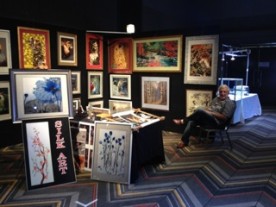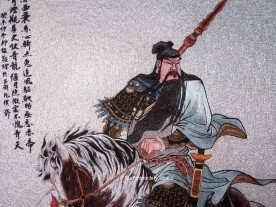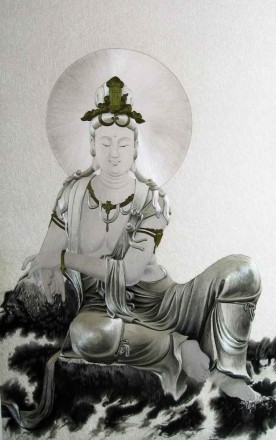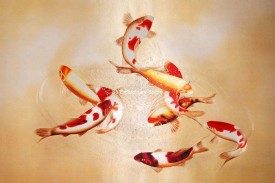Gu Embroidery, originating from the Songjiang region of the Ming Dynasty (now part of Shanghai), is a type of traditional Chinese embroidery that made significant contributions to the development of embroidery art in the late Ming Dynasty.
Gu Embroidery is renowned for its exquisite craftsmanship and delicate expression. It not only requires embroidery artists to possess exceptional manual skills but also demands a good foundation in painting and artistic cultivation. The characteristic of Gu Embroidery lies in the use of extremely fine silk threads and various complex stitching techniques, such as overlaying stitches, gold-thread embroidery, and seed stitching, to create rich textures and layers. This embroidery style focuses on the lifelike representation of natural landscapes and human figures, striving to replicate the effect of painting on silk.
The "Sixteen Arhats Embroidery" (see below) preserved in the Shanghai Museum is a late Ming Dynasty embroidered artwork. Renowned for its fine craftsmanship and rich artistic expression, this work showcases the superb skills and artistic achievements of Gu Embroidery at that time.
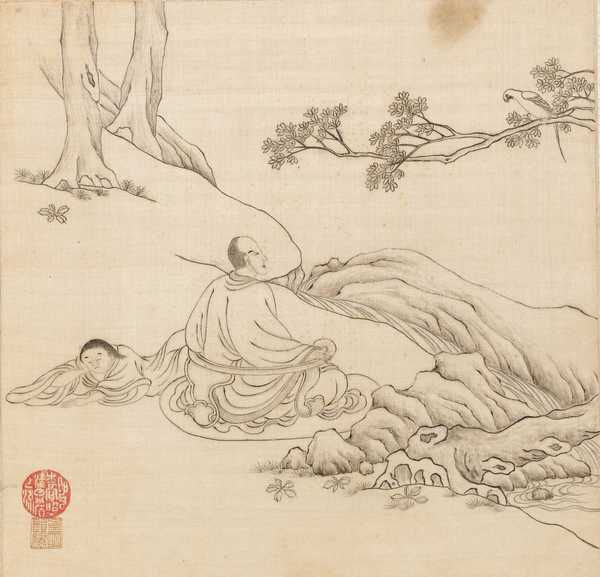
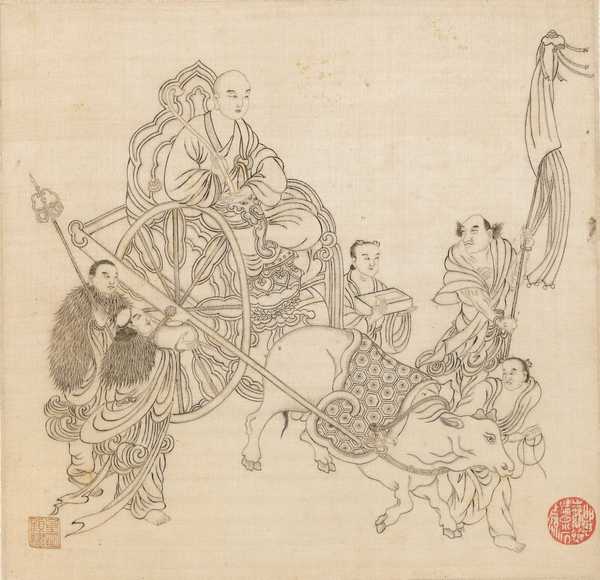
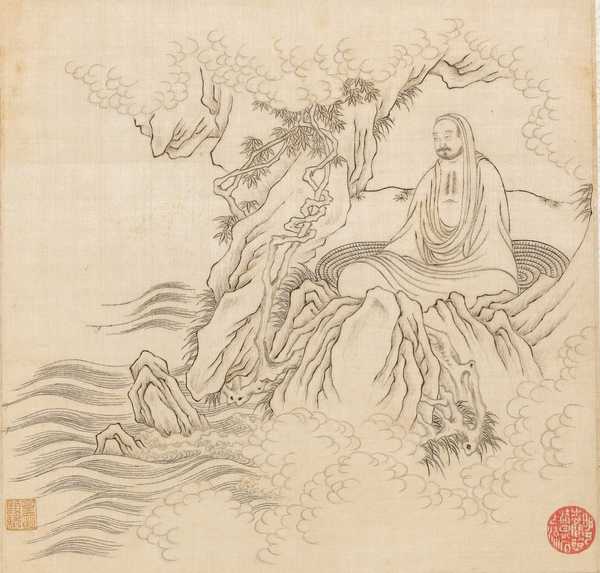
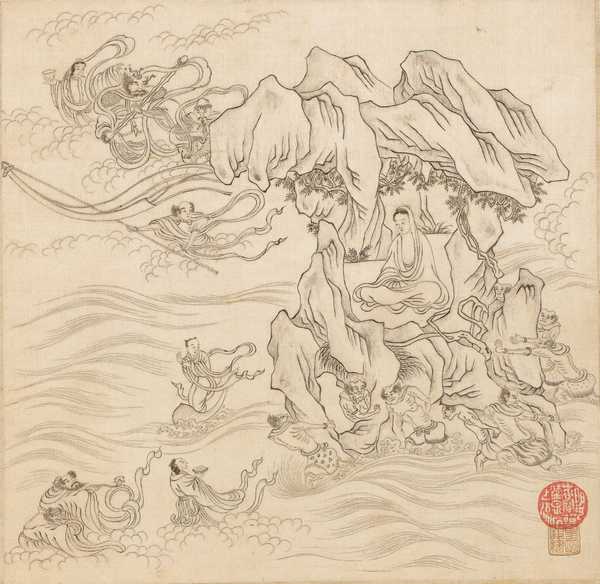
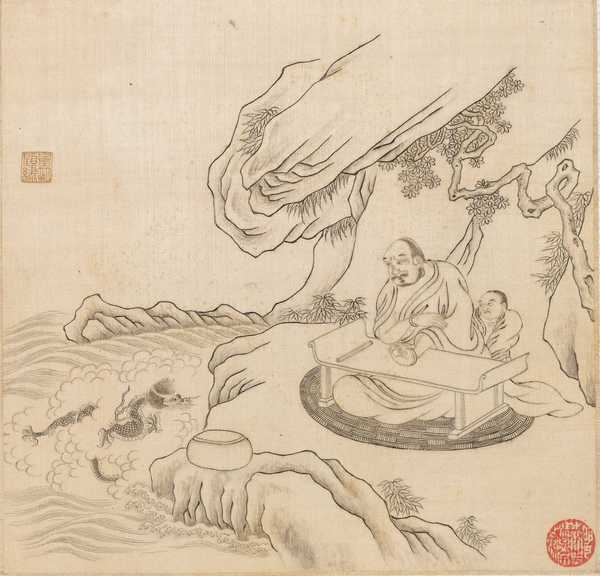


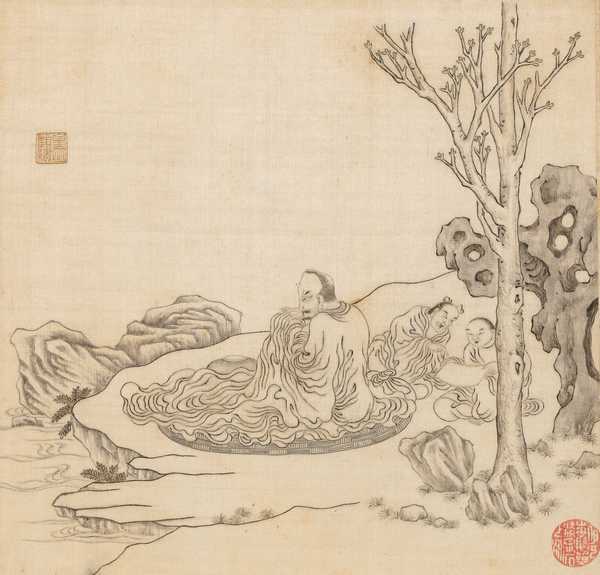
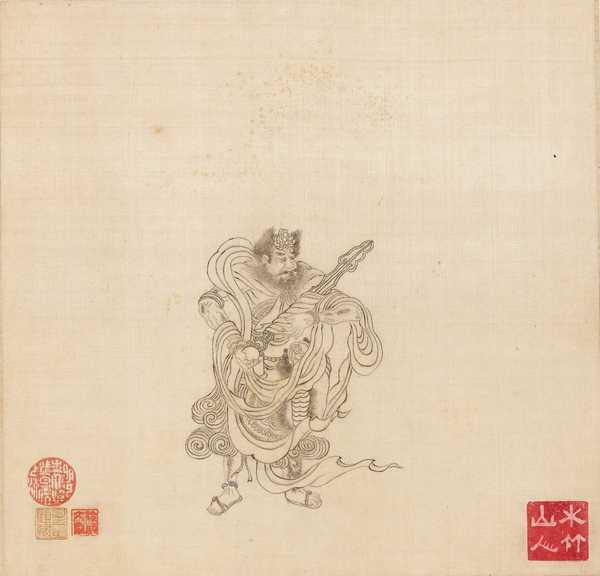
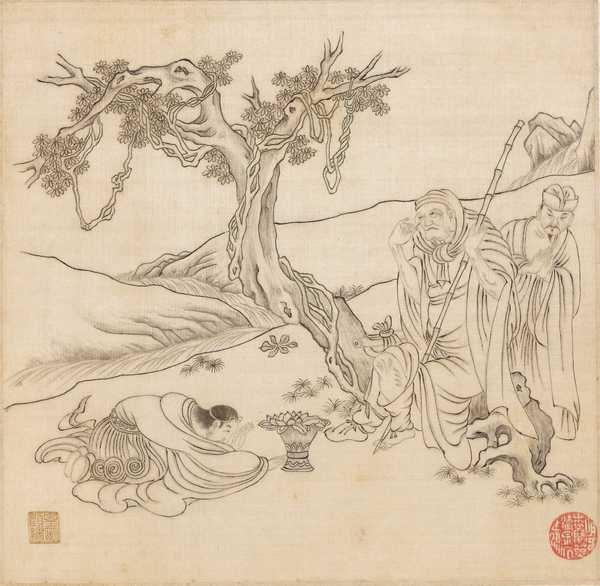
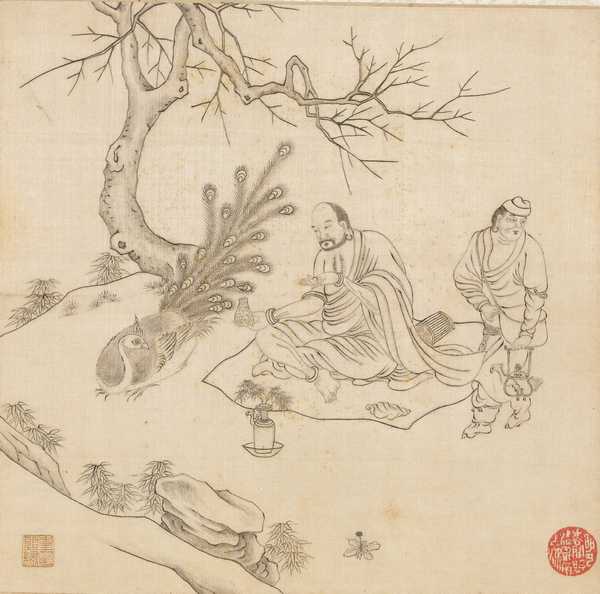
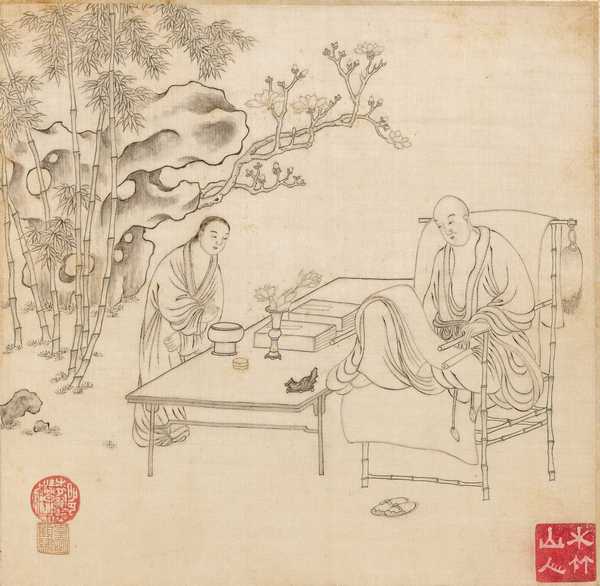
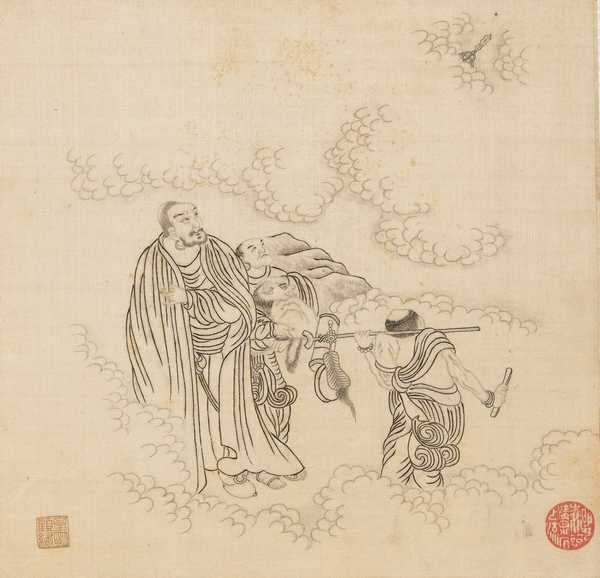
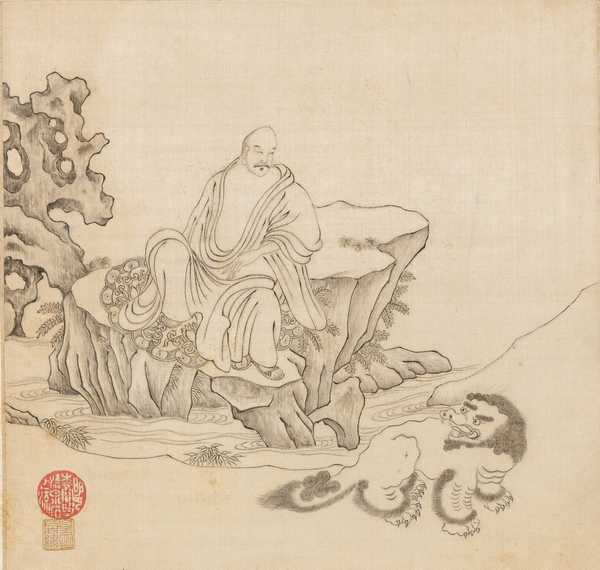
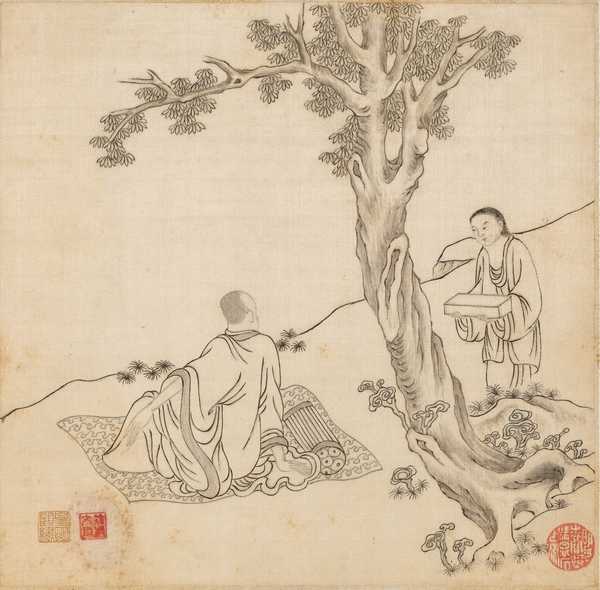
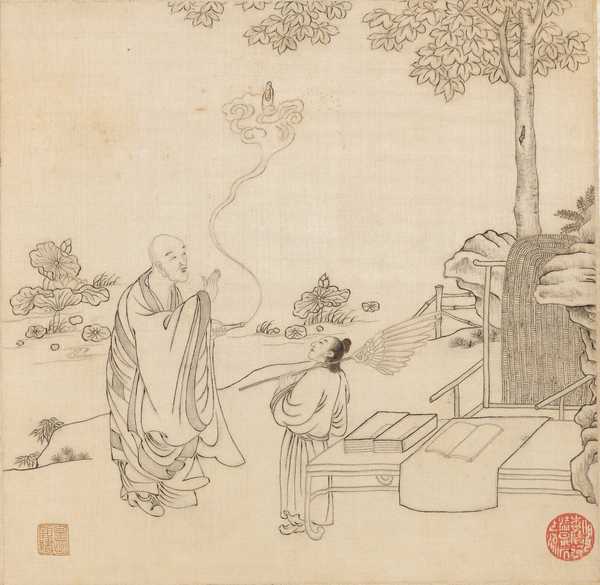
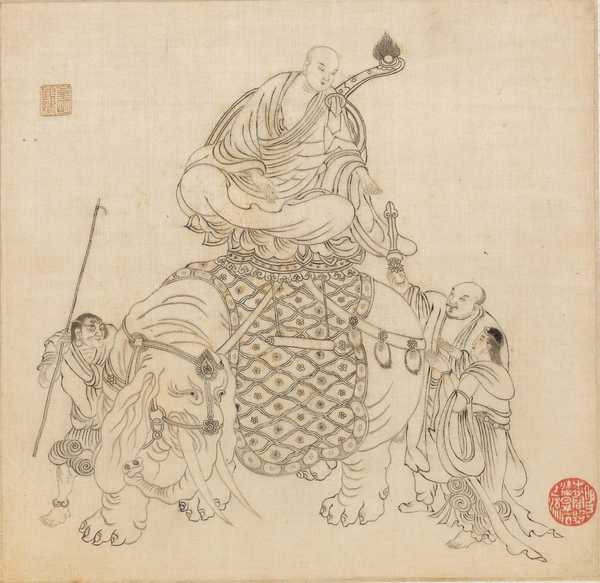
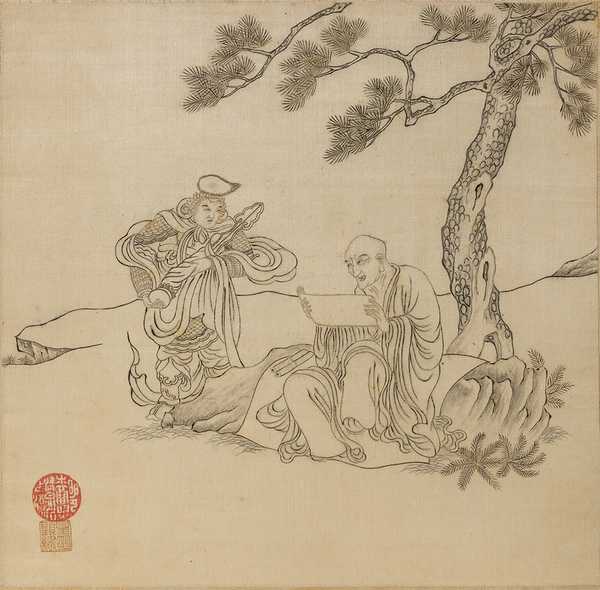
The "Sixteen Arhats" refer to the sixteen disciples of Shakyamuni Buddha who propagated Buddhism in various places, providing sentient beings with the opportunity to hear the Dharma and benefit them. The Arhats depicted in the silk embroidery are all portrayed as ordained monks, wearing simple and clean monk robes, displaying an uninhibited and serene demeanor, and demonstrating the virtuous and peaceful characteristics of eminent monks.
Each picture of the "Sixteen Arhats Embroidery" depicts the delicate portrayal of the Arhats in Buddhism, reflecting the outstanding ability of Chinese silk Embroidery in depicting human figures. These Arhats are usually depicted vividly, with strong personalities and expressions, demonstrating the profound painting skills and meticulous attention to detail of the Gu embroidery artisans.
The craftsmanship of Chinese Embroidery lies in the use of silk threads as fine as hair and various complex stitching techniques, such as overlaying stitches, gold-thread embroidery, and seed stitching, to depict the texture and layers of the picture. In the "Sixteen Arhats Embroidery," the embroiderers used rich stitching techniques and colors, giving each picture a unique artistic style and expressive power.
Moreover, this work is not only a representative of Gu Embroidery art but also a microcosm of the social status improvement of female artists in the late Ming Dynasty. The prosperity of Gu Embroidery provided a stage for female artists to showcase their talents, and they gained respect and recognition from society through the art of embroidery.
In summary, the "Sixteen Arhats Embroidery" is a precious collection in the Shanghai Museum, which not only demonstrates the exquisite skills of Chinese silk hand Embroidery in the Ming Dynasty but also reflects the characteristics of late Ming Dynasty society and the status of female artists.
To view the large photos of the silk embroidered Sixteen Arhats at Shanghai Museum's site https://www.shanghaimuseum.net/mu/frontend/pg/article/id/CI00000092
by Su Embroidery Studio (SES), Suzhou China
SES is dedicated to Chinese Silk Embroidery Art and High-End Custom Embroidery
Find SES's embroidery work at Chinese Silk Embroidery for Sale.







